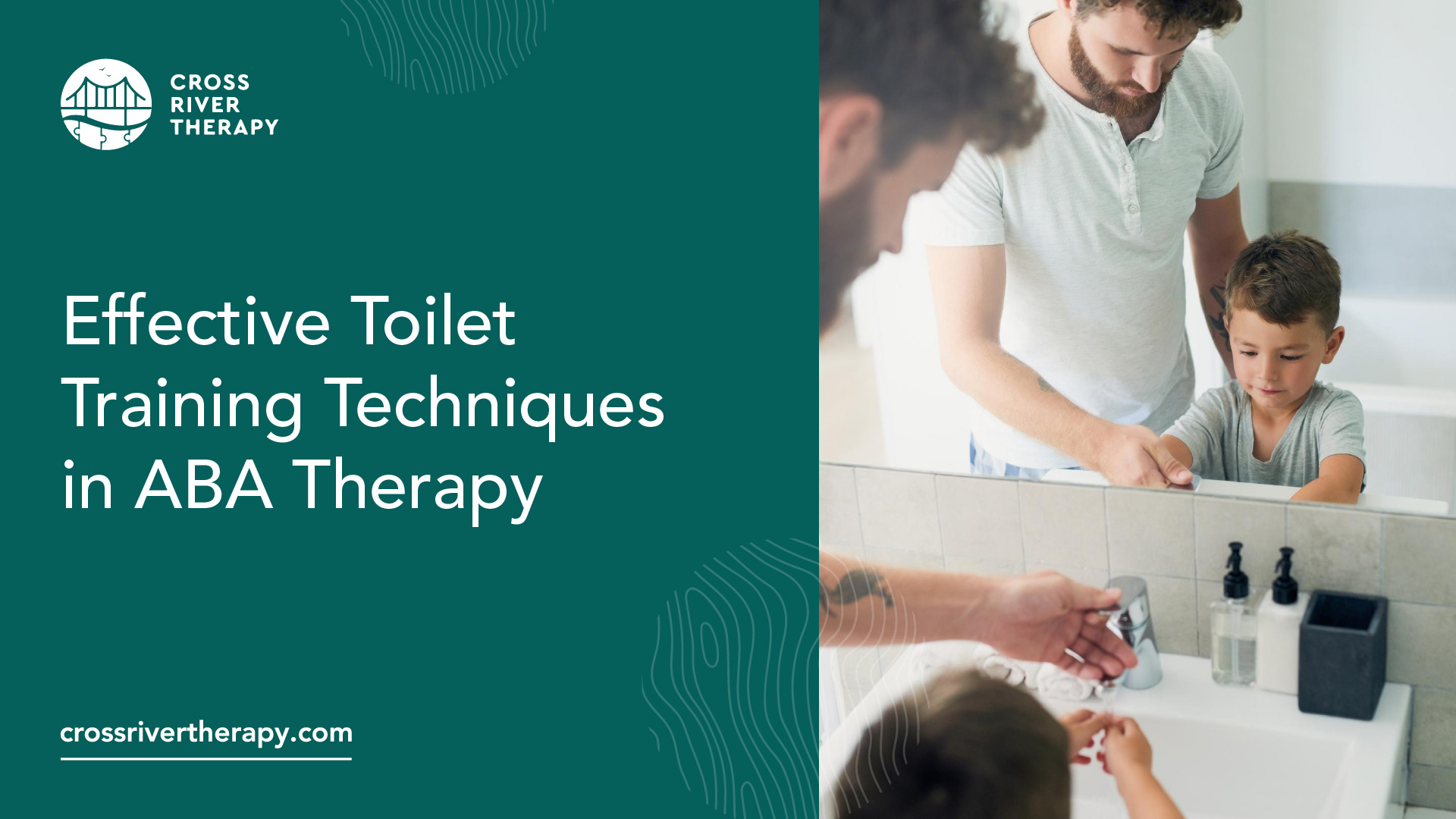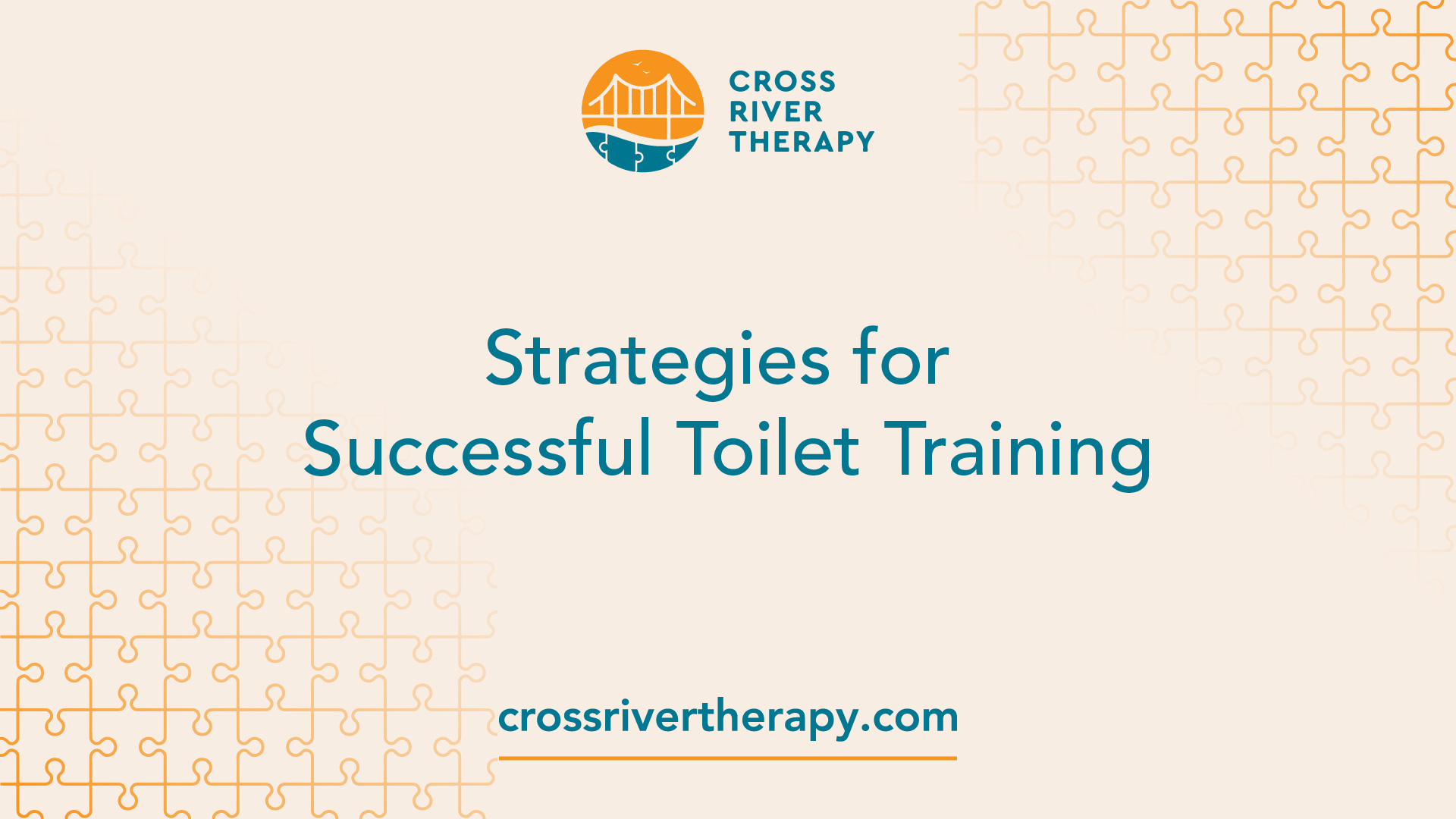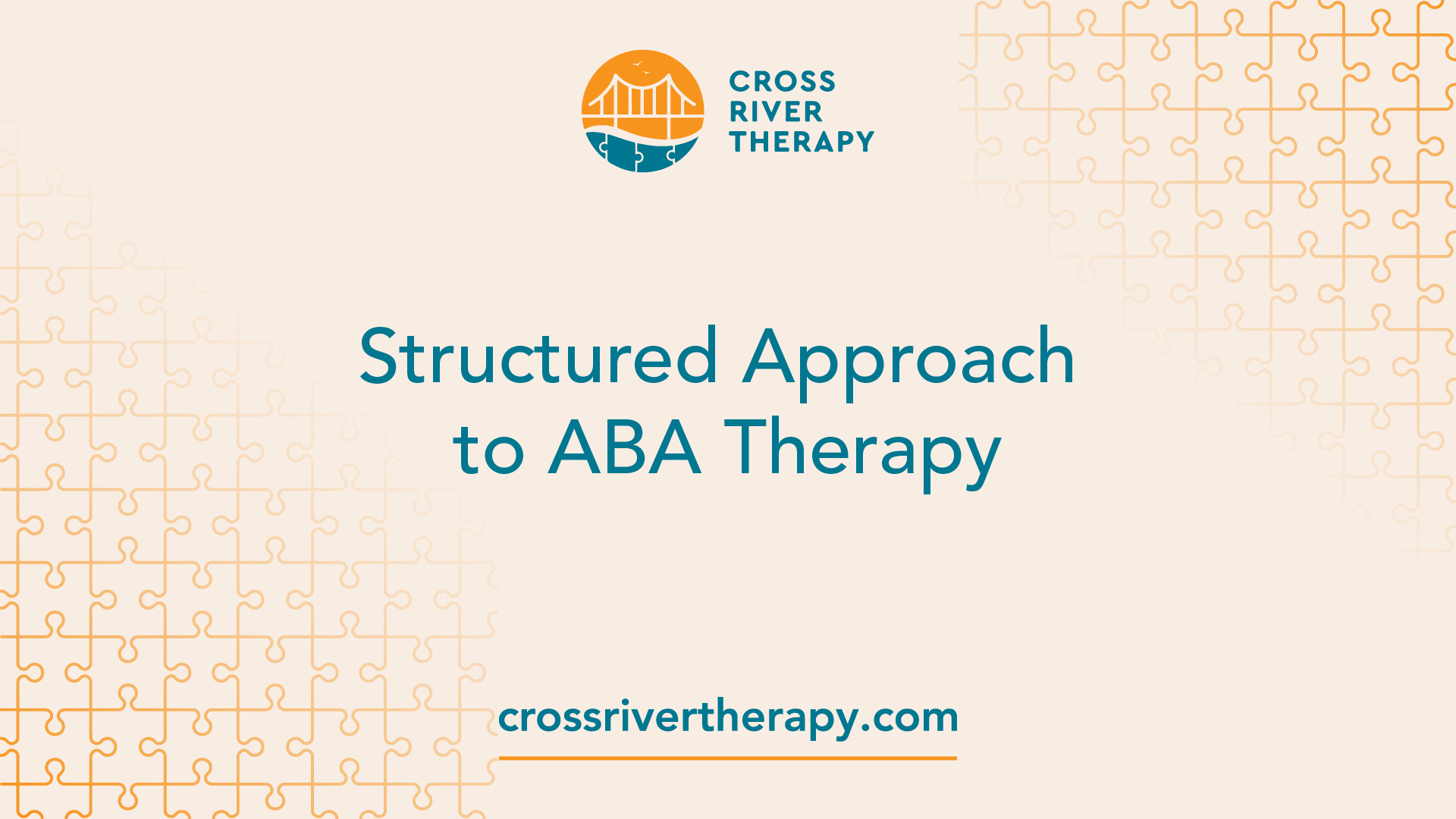Effective Toilet Training Techniques in ABA Therapy
Discover effective ABA therapy techniques for successful toilet training!

Preparing for Toilet Training
Toilet training is an important milestone for children, and for children with autism, it may require a structured approach such as ABA therapy to ensure success. Before embarking on a toilet training program, it is crucial to assess the child's readiness and establish pre-requisite skills to set the stage for a positive experience.
Assessing Readiness
Assessing a child's readiness for toilet training involves evaluating both physical and behavioral indicators. Physically, the child should be able to remain seated for a reasonable amount of time and have successful voids on the toilet [1]. Some signs of behavioral readiness include showing interest in the toilet, staying dry for extended periods, and following simple instructions. It is important to note that children with autism may have unique challenges in communication, routine adherence, and social understanding, which can impact their ability to grasp toileting concepts.
Before initiating toilet training, it is essential to ensure the child has certain pre-requisite skills. These skills may include bladder control, physical readiness, and understanding of the "first-then" contingency [3]. The child should be able to communicate their needs effectively and understand basic instructions related to toileting. Assessing these pre-requisite skills helps to gauge the child's overall readiness and sets the foundation for a successful toilet training journey.
Establishing Pre-Requisite Skills
To establish the pre-requisite skills needed for toilet training, it is important to address any barriers or behaviors that may hinder the process. This may involve working on reducing sensitivities, addressing social cue difficulties, and providing language supports [2]. A comprehensive ABA therapy plan can help in gradually introducing and reinforcing the concepts related to toileting.
In addition to addressing barriers and behaviors, it is crucial to create a supportive environment for the child. This may involve using visual supports, such as schedules and social stories, to help the child understand and follow the toileting routine [4]. Consistency and clear communication are key during this phase to ensure the child feels secure and understands what is expected of them.
By assessing readiness and establishing pre-requisite skills, parents and caregivers can lay a strong foundation for successful toilet training. This prepares both the child and the support team for the structured approach to ABA therapy that will be implemented during the toilet training process. In the next section, we will explore the strategies and techniques involved in toilet training using ABA therapy.
Strategies for Successful Toilet Training

Toilet training can be a challenging process, especially for children diagnosed with autism. However, with the right strategies and approaches, successful toilet training can be achieved. Two important strategies in ABA therapy for toilet training are desensitization techniques and the involvement of parents.
Desensitization Techniques
For some children with autism who protest or refuse to sit on the toilet during training sessions, desensitization techniques may be necessary. The goal of desensitization is to gradually increase the child's comfort level and familiarity with the toilet. Techniques such as making the bathroom fun, incorporating favorite toys or books, and incrementally increasing the time spent on the toilet can help in such cases.
By creating a positive and engaging environment, children can begin to associate the toilet with enjoyable experiences. This can help reduce anxiety and resistance, making the toilet training process more manageable and successful.
Involvement of Parents
The involvement of parents in the toilet training process is crucial for long-term success. However, it is recommended that parents initially leave the training to professionals until the child has achieved a certain level of success, such as being able to stay dry for 30-45 minutes. This allows the child to establish a foundation of skills before transitioning to the home environment.
Once the child has made progress, parents can actively participate in the training process. By working closely with professionals, parents can gain the necessary knowledge and skills to support their child's toileting development. This includes reinforcing accurate behavior demonstrations, providing praise and rewards for successful attempts, and ensuring consistency with the established routines and strategies.
When parents are involved and actively engaged in the toilet training process, it enhances the child's learning experience and increases the chances of successful outcomes. The collaboration between professionals and parents creates a supportive environment and promotes a consistent approach throughout the child's toilet training journey.
By incorporating desensitization techniques and involving parents in the process, ABA therapy for toilet training aims to create a positive and effective learning experience for children with autism. These strategies, along with other structured approaches such as reinforcement strategies and maintaining a potty training schedule, help children develop the necessary skills and habits for successful toileting.
Structured Approach to ABA Therapy

When it comes to toilet training in children with autism, a structured approach using Applied Behavior Analysis (ABA) therapy has proven to be effective. This approach involves implementing reinforcement strategies and following a potty training schedule.
Reinforcement Strategies
Reinforcement is a key component of ABA therapy for toilet training. It involves using powerful reinforcers to motivate and reward desired behaviors. Reinforcement can be in the form of praise, preferred items, or activities that the child finds motivating. By providing positive reinforcement for successful toileting behaviors, such as sitting on the toilet, initiating bathroom visits, or using the toilet correctly, children are encouraged to repeat those behaviors in the future.
The use of reinforcement strategies helps create a positive and rewarding experience during toilet training, making the process more engaging and motivating for the child. It is important to identify the specific reinforcers that work best for each child, as preferences can vary. By tailoring the reinforcement strategies to the individual child's interests and needs, the effectiveness of toilet training can be maximized.
Potty Training Schedule
A structured potty training schedule is another important aspect of ABA therapy for toilet training. This schedule involves putting the child on the toilet at regular intervals and gradually increasing the time intervals between toilet visits. The goal is to establish a routine and help the child develop awareness of their bodily sensations and the need to use the bathroom.
The potty training schedule may include specific times during the day when the child is taken to the bathroom, such as after meals or at regular time intervals. This consistent routine helps the child anticipate bathroom visits and learn to associate certain cues or sensations with the need to use the toilet.
In addition to scheduled visits, dry pants checks can be conducted to reinforce and praise the child for staying dry. This positive reinforcement for dry pants helps reinforce the behavior and encourages the child to continue using the toilet independently.
By following a structured potty training schedule, children with autism can gradually learn to recognize their body's signals, initiate bathroom visits, and complete the toileting routine independently.
In ABA therapy, reinforcement strategies and potty training schedules are just a few of the techniques used to facilitate successful toilet training in children with autism. Other ABA techniques, such as focused reinforcement and discrete trial training, can also be employed to enhance the learning process. To learn more about these techniques and how they can be applied to toilet training, consider reading our articles on ABA therapy for self-injurious behaviors and ABA therapy for repetitive behaviors.
Remember, every child is unique, and it may take time and patience to find the most effective approach for your child. Working closely with an ABA therapist can provide guidance and support throughout the toilet training process, ensuring a positive and successful outcome.
Key Factors for Success
When it comes to toilet training children with autism, there are key factors that contribute to successful outcomes. Two important factors to consider are consistency and fluid intake, as well as tracking progress and patterns.
Consistency and Fluid Intake
Consistency is crucial in ABA therapy for toilet training. Establishing a consistent routine helps children with autism develop a sense of predictability and structure. This includes maintaining a regular potty schedule and ensuring the child drinks plenty of fluids. By adhering to a schedule, you can create opportunities for the child to practice toileting skills at consistent intervals, increasing the chances of success. It's important to note that each child's fluid intake may vary, so it's essential to consult with a healthcare professional to determine the appropriate amount of fluids for your child's age and needs.
Tracking Progress and Patterns
Tracking progress and patterns is an effective way to monitor the child's development in toilet training. By keeping a record of urination patterns, you can identify trends and anticipate when the child is more likely to need to use the bathroom. This information can help in creating a structured plan for toilet training and adjusting strategies as needed. Additionally, tracking progress allows you to celebrate successes and identify areas that may require additional support or intervention.
It's important to remember that toilet training children with autism requires a structured approach that incorporates ABA therapy techniques. ABA therapy focuses on breaking down the toileting process into manageable steps, using strategies such as focused reinforcement and discrete trial training. These techniques help children with autism understand and learn the toileting routine, increasing their independence and promoting positive behavior.
By prioritizing consistency and fluid intake, and tracking progress and patterns, parents can create a supportive environment for toilet training their child with autism. Seeking guidance from professionals and implementing ABA therapy strategies can also contribute to successful outcomes. Remember to approach toileting with patience, persistence, and a positive mindset, celebrating every milestone along the way.
ABA Therapy Techniques
When it comes to toilet training, ABA therapy (Applied Behavior Analysis) utilizes various techniques to help children with autism develop the necessary skills and behaviors. Two key techniques used in ABA therapy for toilet training are focused reinforcement and discrete trial training.
Focused Reinforcement
Focused reinforcement is an essential component of ABA therapy for toilet training. This technique involves using positive reinforcement to praise and reward desired behaviors associated with using the bathroom appropriately. By providing immediate and specific reinforcement, such as praise, tokens, or small rewards, children are motivated to repeat these desired behaviors.
In the context of toilet training, focused reinforcement can be utilized when a child successfully communicates their need to use the bathroom, independently completes the toileting routine, or demonstrates progress in any aspect of the toilet training process. The reinforcement helps to strengthen the connection between the behavior and the positive outcome, increasing the likelihood of continued success.
Discrete Trial Training
Discrete trial training (DTT) is another effective technique employed in ABA therapy for toilet training. DTT breaks down the toileting process into smaller, manageable steps, allowing children to learn and practice each step individually before moving on to the next. This structured approach helps children with autism understand and master the different components of toilet training.
During discrete trial training, a specific skill or behavior related to toileting is targeted, and the child is provided with clear instructions and prompts to perform that particular action. For example, the therapist or caregiver may prompt the child to sit on the toilet, flush, or wash their hands. After the child successfully completes the step, they receive reinforcement in the form of praise or a reward.
By using discrete trial training, children with autism can develop a solid understanding of the toileting process and gain the necessary skills to complete it independently. The repetitive nature of discrete trials helps to reinforce learning and promote generalization of skills to various settings.
ABA therapy for toilet training focuses on creating a positive and supportive environment that encourages independence and success. By incorporating techniques like focused reinforcement and discrete trial training, children with autism can develop the skills and behaviors needed for successful toileting. These techniques, along with other strategies mentioned in the article, work together to make the toilet training process more manageable and effective for both the child and their caregivers.
Overcoming Challenges
Toilet training children with autism can present various challenges, but with the right strategies and approaches, setbacks can be managed effectively. Here are some strategies for overcoming challenges in toilet training through ABA therapy.
Setbacks and Strategies
Setbacks are common in the toilet training process for children with autism. It's important for caregivers to practice self-care and maintain patience and consistency throughout the journey. When facing setbacks, revisiting and reassessing strategies can be helpful. It may be necessary to develop behavioral intervention plans and seek ongoing professional consultation to address specific challenges. Maintaining open communication with therapists and educators can ensure consistency in approaches. By remaining flexible and adaptable, setbacks can be managed effectively, and progress can be regained.
Tailoring Approaches
Toilet training children with autism requires tailoring the approaches to meet their unique needs. Here are some strategies for addressing specific challenges:
- Modifying the bathroom environment: Make adjustments to accommodate sensitivities and preferences. This can include using specific lighting, providing comfortable seating, or reducing overwhelming sensory stimuli.
- Alternative communication methods: If the child has communication challenges, using alternative methods such as visual supports, picture schedules, or assistive communication devices can help them express their needs.
- Gradual exposure and desensitization techniques: Some children with autism may exhibit resistance to toileting. Gradual exposure and desensitization techniques can be used to help them become more comfortable with the process.
- Tailoring reinforcements: Every child has unique motivators. Tailor reinforcements based on what is most meaningful to the child, whether it's praise, small rewards, or preferred activities.
- Flexibility in strategies: Be open to modifying strategies as needed. What works for one child may not work for another. Remaining flexible allows for adjustments that fit the child's specific needs.
- Collaborating with parents and educators: Consistency is crucial in toilet training. Collaborating with parents and educators helps ensure that the strategies used are consistent across different environments, reinforcing learning and progress.
By employing these strategies and adapting to individual circumstances, parents and caregivers can effectively overcome challenges in toilet training their children with autism.
Toilet training within ABA therapy often involves structured programs that include creating a schedule, using visual aids, providing rewards for successful toileting, and gradually fading out prompts. ABA-based interventions such as focused reinforcement, discrete trial training, physical prompts, schedule routines, and caregiver modeling of appropriate behaviors may also be utilized to help children with autism develop the necessary skills for successful toileting.
Remember, every child is unique, and it's important to tailor the approaches to their specific needs. Seeking professional guidance and monitoring progress can help in adjusting strategies along the way. With patience, persistence, and the right strategies, toilet training can be a successful journey for children with autism.
References
[1]: https://blossomchildrenscenter.com/2024/04/09/potty-training-using-aba/
[2]: https://doublecareaba.com/autism-toilet-training-unleashed-with-in-home-aba-therapy-tips/
[3]: https://howtoaba.com/toilet-training-101/
[4]: /aba-therapy-and-visual-supports
[5]: https://www.abacenters.com/aba-therapy-for-toilet-training/



